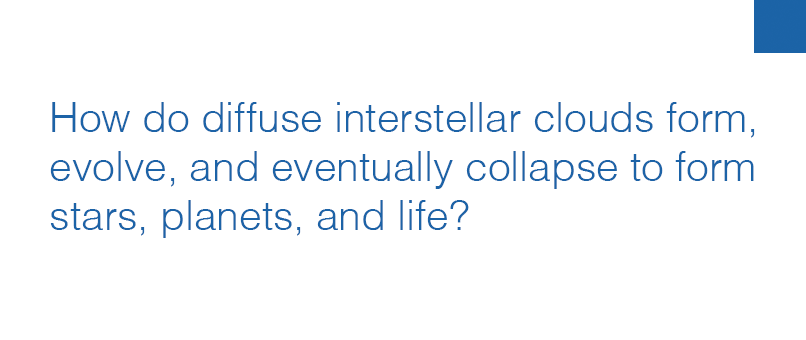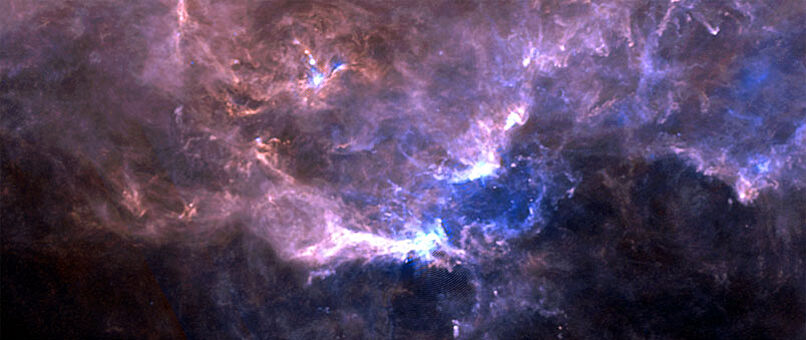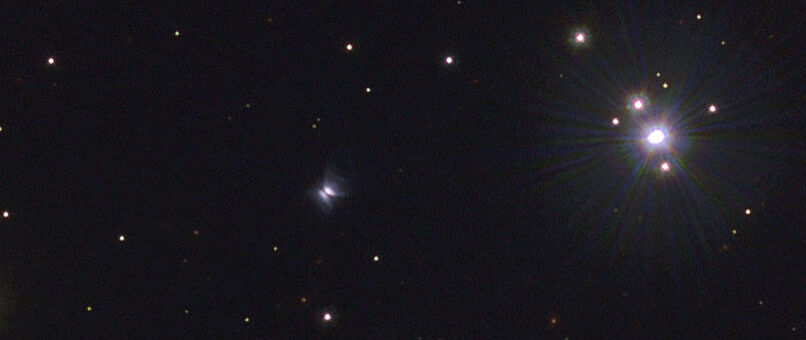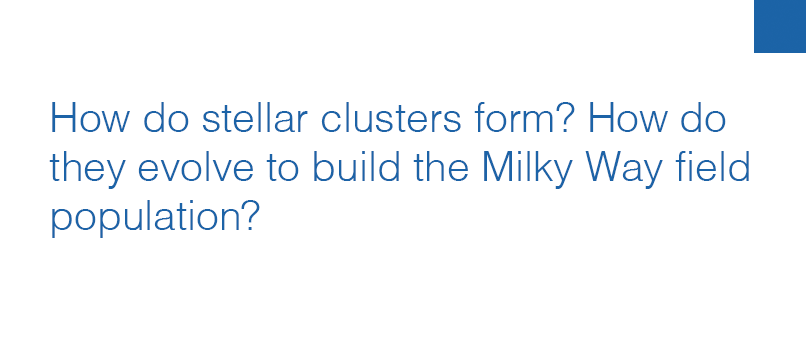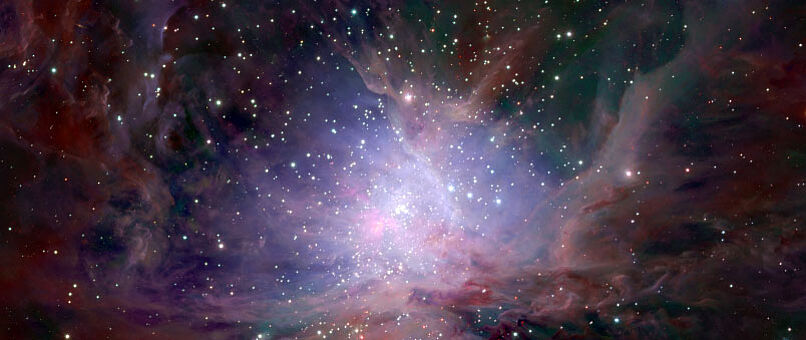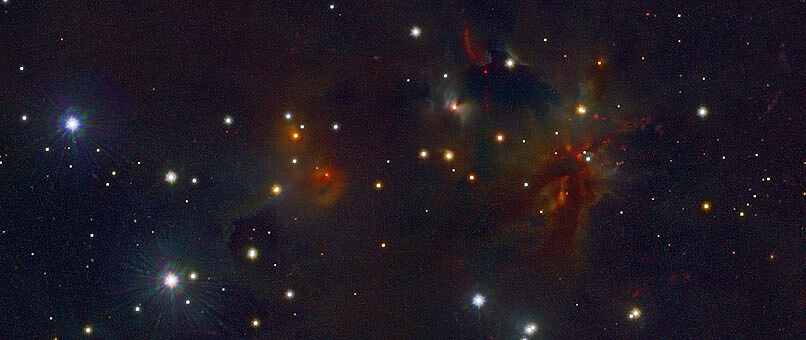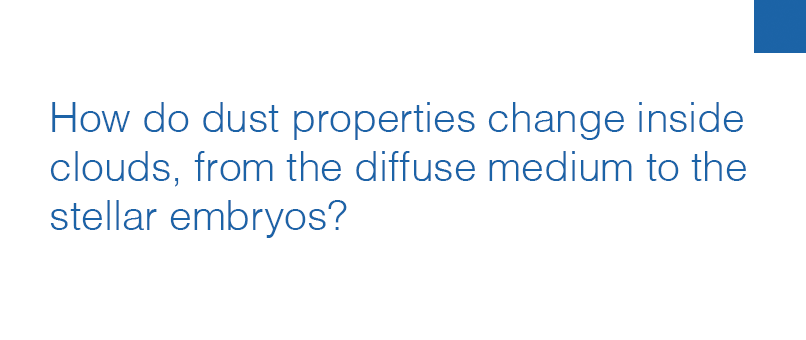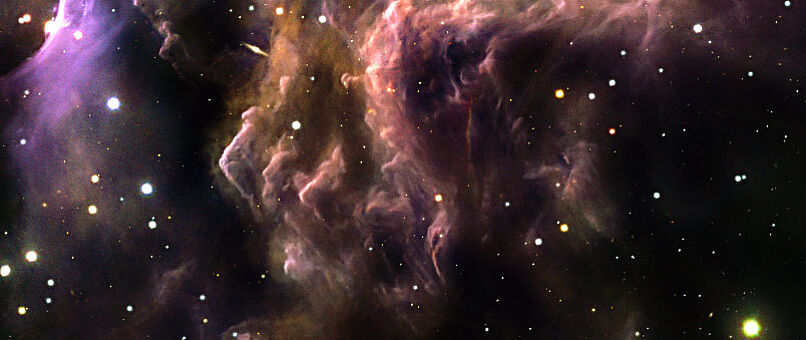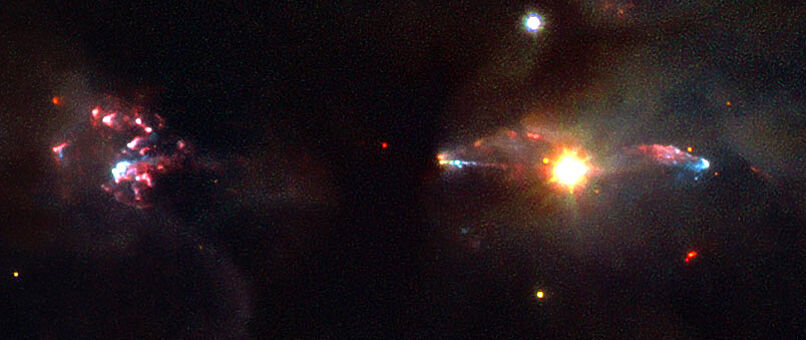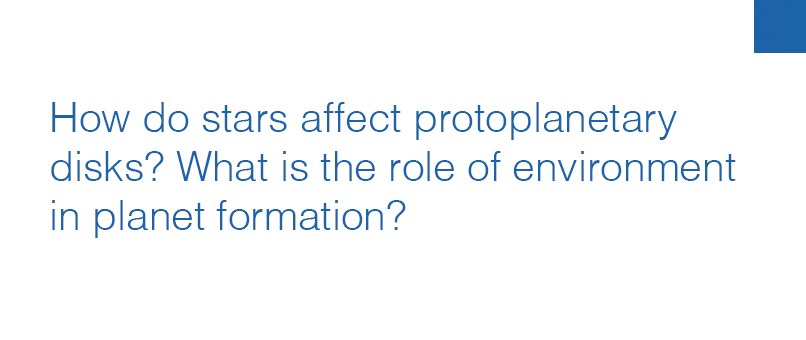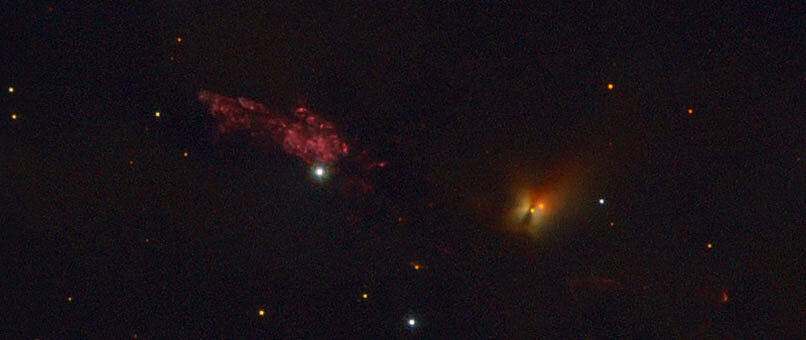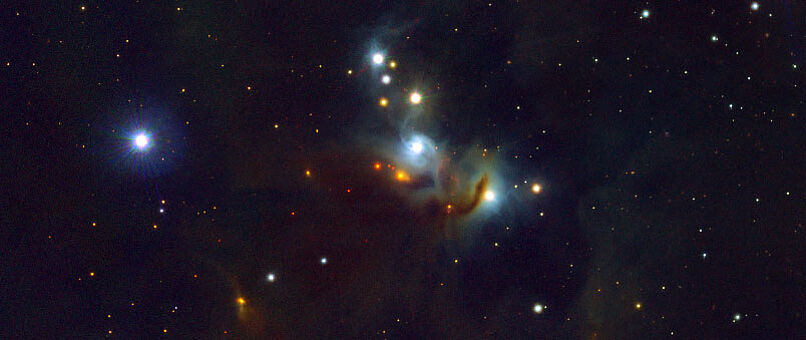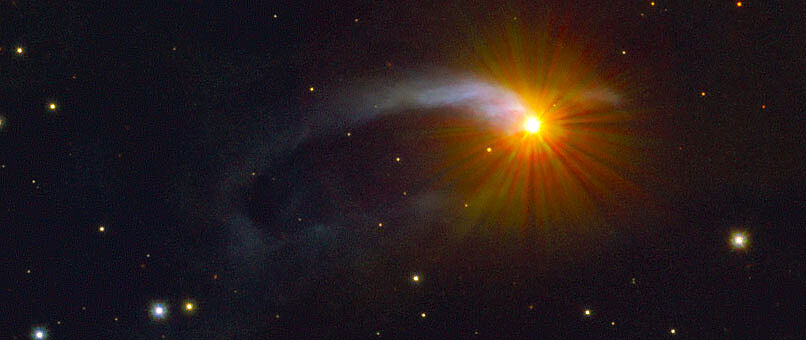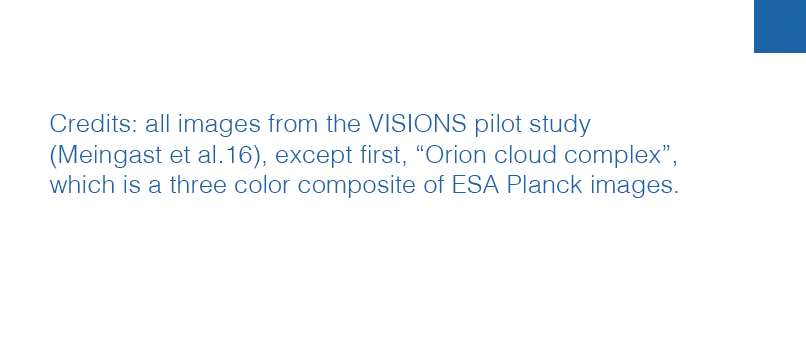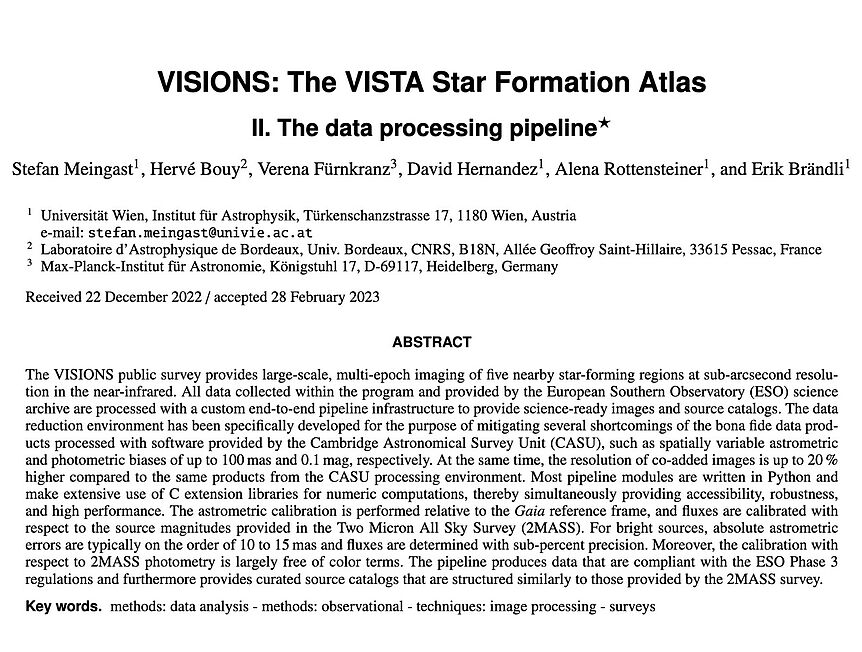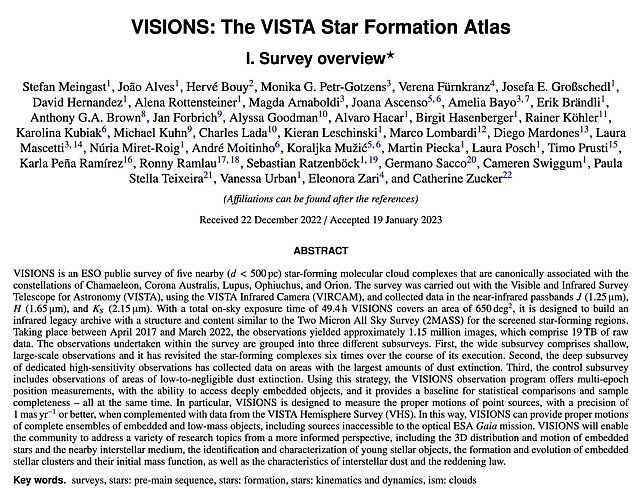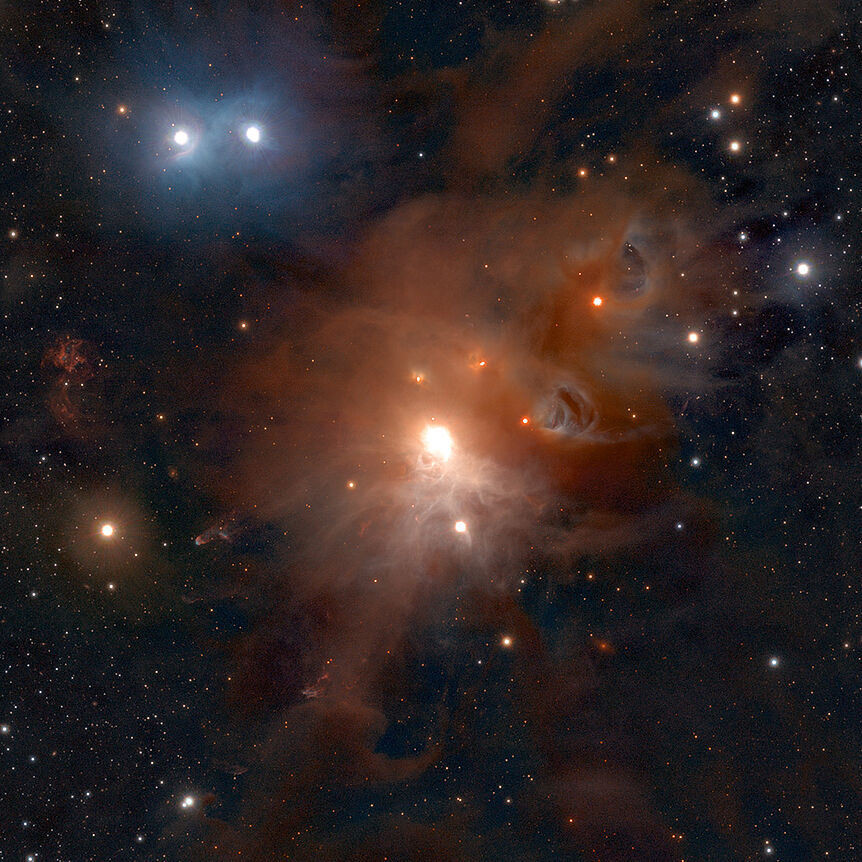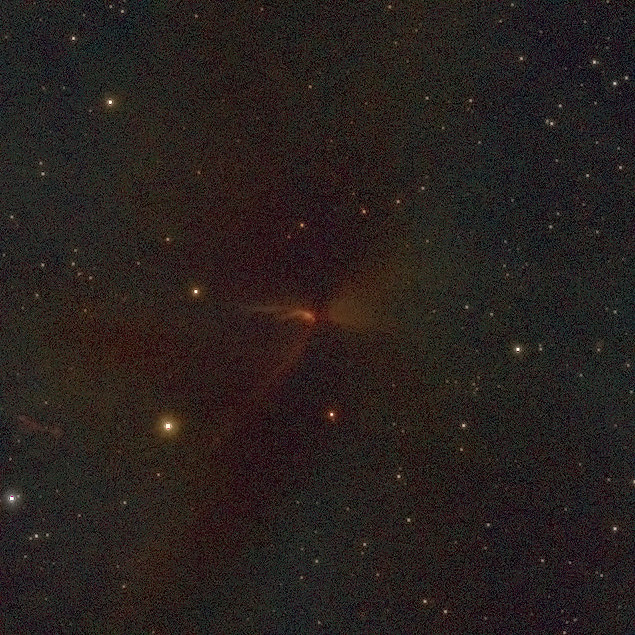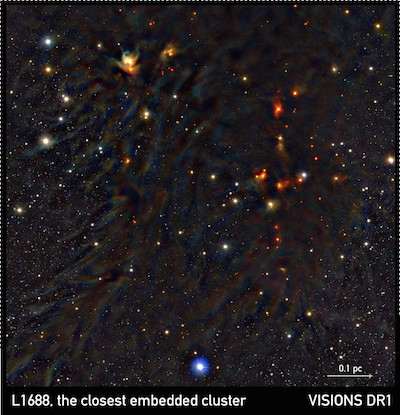VISIONS - The search for our cosmic ancestry
The VISTA Star Formation Atlas (VISIONS) is a sub-arcsec near-infrared atlas of all nearby (d < 500 pc) star formation complexes accessible from the southern hemisphere. The atlas will contain tens of thousands of young stars (from 0.1 to 10 Myr), will be sensitive to objects down to a few Jupiter masses, and reach spatial resolutions of 100-250 AU. VISIONS will cover a total of ~550 square degrees distributed over six nearby stellar nurseries: Ophiuchus, Pipe Nebula, Lupus, Corona Australis, Chamaeleon-Musca, and Orion. All these regions will be observed twice per year, for three years, to allow the community to measure the proper motions of young stars still buried in their parental cloud, hidden from optical wavelengths.
When completed, VISIONS will be the most sensitive and complete NIR survey of local star formation and will feed the next generation of telescopes (e.g., ELT) with new targets for star and planet formation studies. Together with Gaia, VISIONS will reveal the 3D dynamics of the nearby stellar nurseries, as well as of the clouds spawning them, allowing the community to explore resolved star formation in a robust, large, and contextual manner, from cloud formation to the build up of the Milky Way field population. VISIONS aims to establish the “local truth” on the relation between young stars and molecular clouds, providing a benchmark for extra-galactic studies.
- 3D distribution of the star forming ISM and the Milky Way context
- Molecular cloud formation and evolution
- A reliable look into the CMF/IMF relation and assert on the origin of the IMF
- Resolved Kennicutt-Schmidt relation (down to 0.1 pc)
- Proper motions of embedded objects and young stars
- YSO identification, characterization, and precise evolutionary sequence
- Dust properties and reddening law variations
- Cluster formation and evolution
- The IMF down to the brown-dwarf/planet regime
- Wide binaries
- Jets and outflows
- Effects of young stars on protoplanetary disks
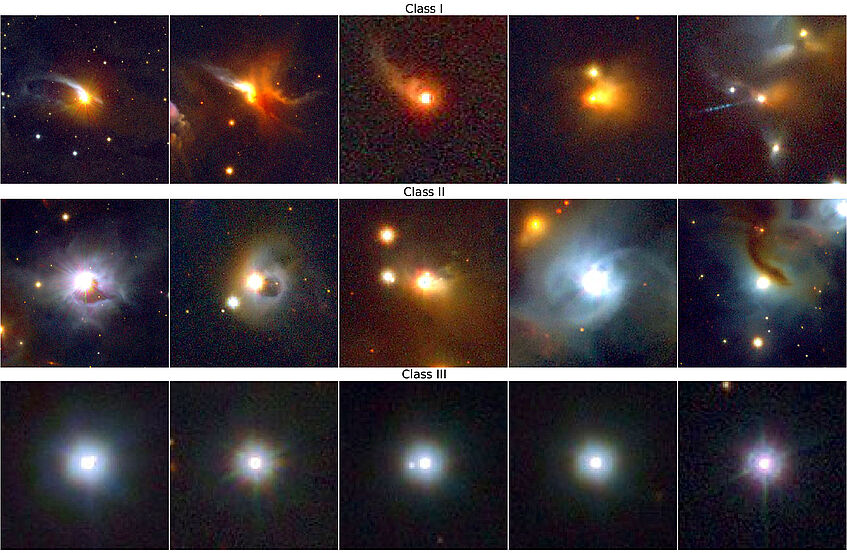
The three main classes of young stars in the Orion A giant molecular cloud observed in the VISIONS pilot survey (Meingast et al. 2016): Class I (or Protostars) contain the youngest stars, barely born and still deeply embedded in the cloud, while the more evolved Class II and Class III contain young stars with and without dusty disks where planet formation is likely to be taking place. VISIONS will collect thousands of images such as these (with physical resolutions of 100-250 AU) which will allow the fine tuning of this rough evolutionary sequence and a better understanding of the early evolution of stars.

